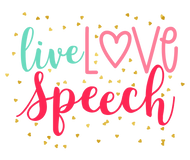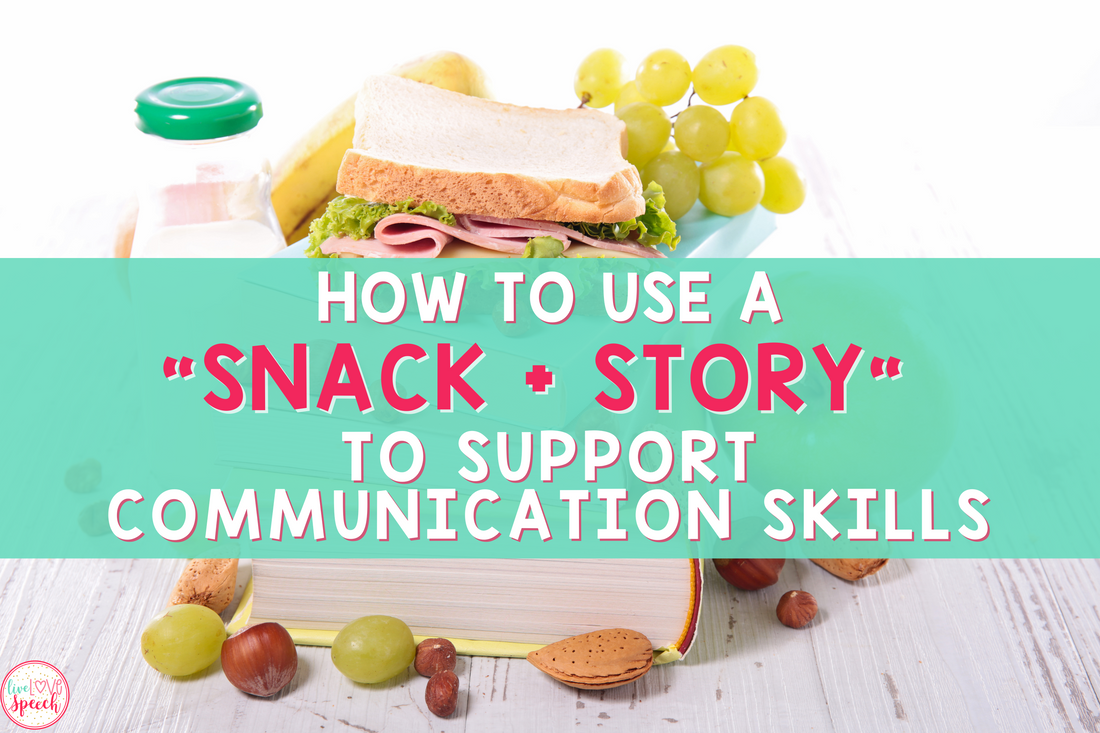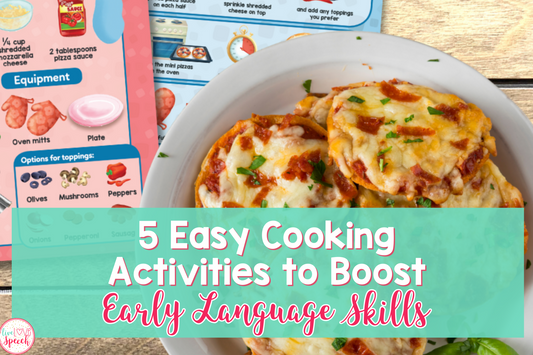
As parents, SLPs, educators, or caregivers, we are always on the lookout for creative and effective ways to support communication skills and language development. One awesome method that combines the joy of storytelling with a tasty treat is my "Snack & Story" approach. In this blog post, we'll explore how this dynamic duo can be a SUPER tool in connecting LIFE SKILLS with LITERACY!

The Magic of "Snack & Story"
Why is the "Snack & Story" approach so effective in promoting speech and language development? Let's uncover the magic:
1. Captivating Engagement:
- Stories have a unique ability to capture a kid's imagination. They transport kids to different worlds, introduce new concepts, and stimulate curiosity.
- Snacks, on the other hand, pique their interest with delicious flavors and textures. The promise of a tasty treat can make any learning activity exciting.
2. Contextual Learning:
- Stories provide a meaningful context for language. They introduce new words, phrases, and concepts within a narrative that's relatable to kids.
- Snack time creates a real-world context for communication. Children learn to express their preferences, ask for more, or describe the taste and texture of the snack.
3. Vocabulary Expansion:
- Stories often expose kids to a broader vocabulary, helping them learn new words and their meanings.
- Snack discussions provide opportunities for kids to use and reinforce this vocabulary in practical, real-life scenarios.
4. Encourages Social Interaction:
- Sharing a story and snack fosters social interaction. Kids learn turn-taking, listening, and team work skills.
- Group sessions promote peer interactions, helping kids generalize their speech and language skills in a social context.

Creating Your Own "Snack & Story" Session
Now, let's dive into how to create your own "Snack & Story" session to support speech and language skills...
1. Choose a Theme: Select a theme that aligns with either the kid's interests or with the classroom teacher. For example, you can choose themes like "Animals," "Weather," or "Friendship."
2. Pick the Perfect Story: Find a book that fits your chosen theme. Make sure it's age-appropriate and engaging. Look for opportunities to emphasize target sounds, vocabulary, or basic concepts.
3. Visuals: Gather or create visuals related to the theme. Visuals can help reinforce vocabulary and concepts introduced in the story. *Use a Visual Recipe when making your snack too!*

4. The Snack Selection: Choose a snack or no-cook recipe that complements your theme. For example, "Pumpkin Patch Dirt Cups" for a Halloween/pumpkin theme or "S'mores on a Stick" for a camping theme. **Always remember to check with parents and/or teachers regarding dietary restrictions and allergies.**
5. Storytelling and Discussion:
- Read the story aloud, emphasizing target sounds or vocabulary. Pause to discuss the story, asking questions that encourage the child to express themselves and use target words.
- Encourage active listening and participation by prompting the child to predict what happens next or retell parts of the story.
6. Snack-Time Conversations: Enjoy the snack together. Use this time for conversations related to the story, the theme, or simply to encourage communication.

This "Snack & Story" approach offers a super fun and effective way to support communication skills in children. It taps into their natural curiosity, provides meaningful context for language, and encourages social interaction. So, whether you're a parent, educator, SLP or caregiver, consider adding a dash of creativity to your classroom lessons, speech sessions or at home by incorporating this dynamic duo into your child's routine.
Need some more inspiration?!
Every Sunday over on Instagram (@live.love.speech) and Facebook (Live Love Speech), I share the perfect SNACK + STORY pairings to make your life easier! If you are ready to be inspired and prepared, then head over and FOLLOW and/or LIKE my pages.
SAVE THIS POST!







